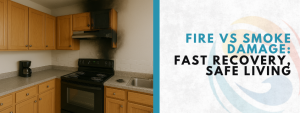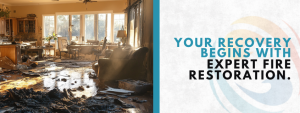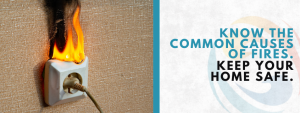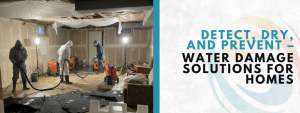
Ever noticed dark rings or weird yellow stains on the ceiling around your air vents? You might have shrugged it off as just dirt or old paint. But the truth is, ceiling discoloration around vents could be more than just a cosmetic nuisance. It might be trying to tell you something—something you shouldn’t ignore.
Let’s walk through why this happens, what it means, and how you can figure out if it’s harmless… or a signal of a bigger problem hiding above your head. You don’t have to be a contractor or a scientist to get this—just a homeowner who wants to keep their space safe and sound.
Imagine this: you’re lying in bed, looking up, and see a brownish ring slowly spreading around the air vent. It wasn’t there last month. Now, it’s bigger. Is it just dust? Is it mold? Do you need to panic? Let’s break it down.
What Causes Ceiling Discoloration Around Vents?
The most common culprit? Moisture and dust. When cold air flows through the vent and meets the warmer room air, it causes condensation. That tiny bit of water grabs dust particles from the air, and when it settles on the ceiling, it leaves behind a shadowy stain.
Some things that make this worse:
- Poor insulation in your attic or ducts
- Leaky HVAC systems letting out extra moisture
- Dirty air filters clogging the system and sending dust flying
- High indoor humidity (especially in bathrooms or kitchens)
- Vent materials that don’t handle temperature changes well
You may also see these stains take on strange shapes. Sometimes they look like halos. Sometimes they spread out in patches like clouds. Either way, ceiling discoloration around vents usually follows air flow patterns—so if the air’s dirty or damp, your ceiling becomes the canvas.
When It’s Harmless (But Still Annoying)
Not every stain is a red alert. If the ceiling discoloration around vents is light, dry to the touch, and hasn’t changed much over time, it may just be cosmetic.
Signs it’s nothing serious:
- The stain is light gray or dusty brown
- It’s been the same size for months
- There’s no smell or moisture
- Your vents and attic are dry and clean
If that’s the case, some cleaning and a coat of stain-blocking paint may do the trick. But keep watching it. If it spreads or darkens, something deeper may be going on.
When It’s a Warning Sign
Now, here’s where things get serious. Sometimes, ceiling discoloration around vents is a symptom—not the problem. That same moisture that causes the stain could also be feeding mold, damaging drywall, or even shorting out wiring hidden above the ceiling.
You should worry if:
- The stain is dark brown, yellow, or black
- It feels damp or soft to the touch
- The area smells musty
- Your air smells moldy when the HVAC kicks on
- The stain keeps growing
These are signs of water damage or mold growth. If ignored, it can lead to costly repairs and health issues. Untreated moisture damage can spread quickly—through insulation, walls, and flooring.
Looking to stop the damage before it spreads? Check out this expert help for hidden home issues that often go unnoticed.
Common Misconceptions About Ceiling Discoloration Around Vents
- “It’s just dirt from the vent.”
Sometimes true, but dirt doesn’t usually create rings or sticky patches. If there’s moisture involved, it’s more than just dust. - “I’ll just repaint it.”
Paint might cover it temporarily, but it won’t stop the root problem—moisture. That stain will be back. - “If it’s not dripping, it’s fine.”
Drips are only one sign. Mold and dampness can hide for weeks before becoming visible. - “Ceilings can breathe; it’ll dry out.”
Unfortunately, most modern ceilings are sealed with paint and drywall. Once wet, they hold onto moisture unless it’s dried out quickly.
What Kind of Stain Is It? (A Quick Table Guide)
| Color | Texture | Possible Cause | Action Needed |
| Light gray | Dry | Dust buildup | Clean and monitor |
| Brown/yellow | Damp or dry | Moisture from HVAC | Inspect ducts and insulation |
| Black/green | Damp or soft | Mold or mildew | Call a professional immediately |
| Rust orange | Dry/dusty | Corroded metal ducts | Replace or seal vents |
| White/white dust | Chalky/powdery | Mineral deposits from leaks | Check for water leaks or condensation |
How to Fix and Prevent Ceiling Discoloration Around Vents
No one likes ugly stains on their ceiling. But good news: many causes are preventable with just a few steps.
Here’s what you can do:
Step 1: Check Your Air Filters
Dirty filters cause dust to circulate. Replace them every 1-3 months to keep your air clean.
Step 2: Inspect Your Vents
Use a flashlight. If the vent is damp, moldy, or rusty—turn off the system and investigate further.
Step 3: Improve Ventilation
Install bathroom and kitchen exhaust fans if you don’t have them already. These reduce moisture in the air that can contribute to staining.
Step 4: Seal Ducts and Add Insulation
Poorly insulated ducts cause condensation. Adding insulation around ducts (especially in the attic) keeps temperature differences from forming moisture.
Step 5: Use a Dehumidifier
If your home has high humidity, a dehumidifier helps keep moisture levels balanced, especially in warm seasons.
Step 6: Paint with Mold-Resistant Paint
If you’ve had discoloration before, repaint the area using a mold- and mildew-resistant primer and paint.
Need a full inspection after noticing moisture buildup? Explore professional cleanup services for hidden damage that take care of the source—not just the surface.
Real-Life Example
Linda from Studio City noticed a yellow ring forming around her vent in the upstairs bedroom. She wiped it down, repainted it, and thought it was gone. A month later, it came back—bigger and darker.
Turns out, her HVAC system had a slow leak in the attic. Moisture seeped into the drywall, feeding mold behind the ceiling. It wasn’t until she called a technician that she discovered how widespread the damage was. She had to replace the ductwork, drywall, and even some of the attic insulation.
If you live in Southern California, don’t wait—see how local experts help uncover issues fast before they get worse.
Final Thoughts
Ceiling discoloration around vents isn’t always something to panic about—but it’s never something to ignore. A small stain today can turn into mold, sagging ceilings, or health problems tomorrow if left unchecked.
If you see signs like dark rings, damp drywall, or a musty smell, act fast. Keep your HVAC system clean and inspected. Improve airflow. And don’t hesitate to call in a pro if something doesn’t feel right.
Remember, your ceiling isn’t just paint—it’s your home’s first signal that something could be going wrong behind the scenes. Listen to it. Because sometimes, what looks harmless… is just hiding a bigger issue underneath.
Frequently Asked Questions About Ceiling Discoloration Around Vents
Why is there a dark ring around the vent on my ceiling?
This usually happens due to condensation mixing with dust or dirt, creating a visible stain. It’s often linked to poor insulation, high humidity, or dirty air filters.
Should I be worried if the stain around my vent keeps getting bigger?
Yes, expanding stains can indicate moisture problems or hidden mold growth. It’s best to inspect the source or contact a professional right away.
Can I just paint over the ceiling discoloration around vents?
Painting over it might temporarily cover the stain, but won’t fix the root cause. Moisture and mold can return unless the underlying issue is resolved.
How can I stop these stains from coming back?
Regular HVAC maintenance, sealing ducts, and improving insulation can prevent future discoloration. Using a dehumidifier and replacing filters also helps.
Is ceiling discoloration around vents dangerous to my health?
If mold or mildew is involved, it can trigger allergies or respiratory issues. Always check for dampness and odor to ensure it’s not harmful.






